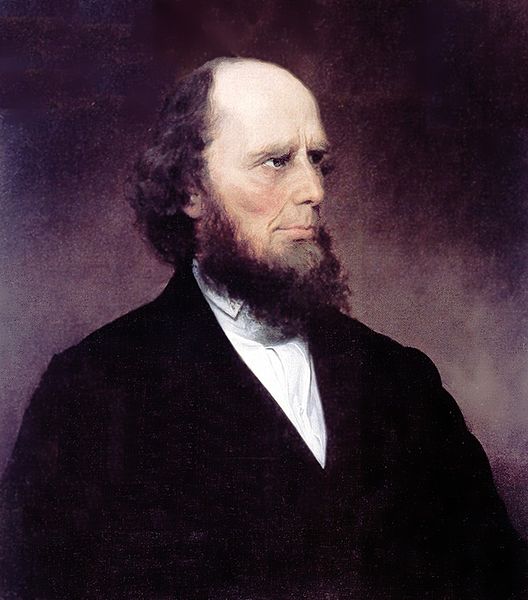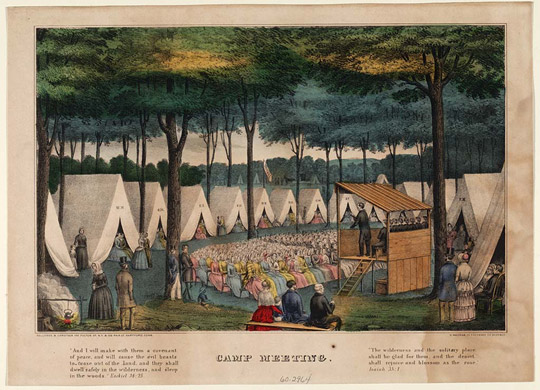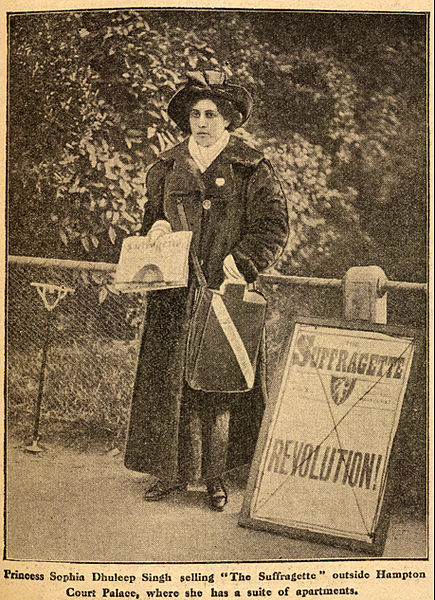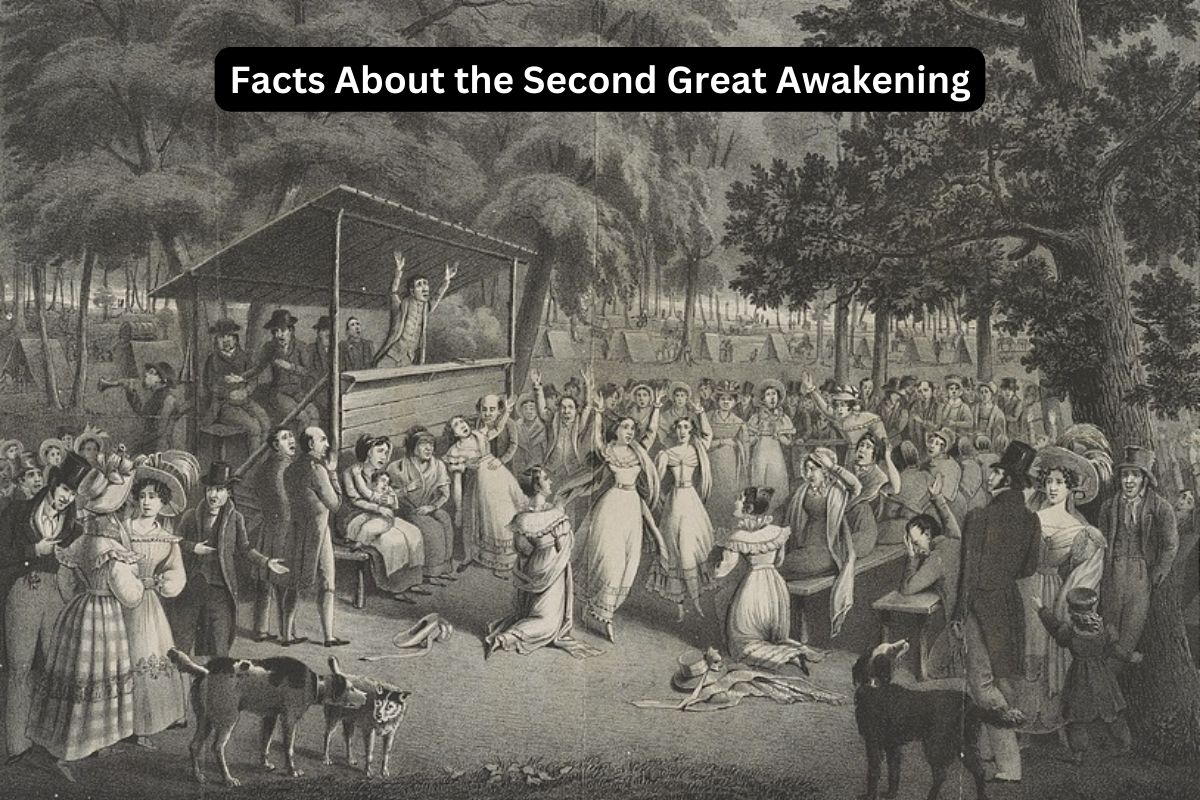The Second Great Awakening was a transformative religious revival movement that swept through the United States during the early 19th century.
It emerged as a response to the changing social and religious landscape of the young nation and had a profound impact on American society, culture, and religious life.
This revival was characterized by its geographic spread, religious diversity, influential figures like Charles Finney, the use of camp meetings, an emphasis on personal conversion, and its role in sparking social reform movements.
It also played a significant role in the establishment of educational institutions and the proliferation of new religious denominations. In this article, we will explore the key aspects and lasting effects of the Second Great Awakening in more detail.
Second Great Awakening Facts
1. Time Period: Early 19th century
The Second Great Awakening took place primarily during the early 19th century, with its roots dating back to the late 18th century. It gained significant momentum in the 1820s and 1830s.
Also Read: The Great Awakening Timeline
This religious revival movement was a response to the perceived decline in religious fervor and the rise of secularism that had occurred in the decades following the American Revolution.

2. Geographic Spread: Started in New England, spread across the United States
The Second Great Awakening initially began in the northeastern United States, particularly in states like New York, Connecticut, and Massachusetts.
It quickly spread westward, reaching the rapidly expanding frontier regions of the country. This westward expansion of the revival played a crucial role in shaping the religious and social landscape of the American frontier.
Also Read: Timeline of the Second Great Awakening
The movement had a profound impact on both urban and rural areas, contributing to the religious vibrancy of the nation as a whole.
3. Religious Diversity: Included various Protestant denominations and non-denominational groups
Unlike the First Great Awakening, which was primarily a revival within the existing Congregationalist and Presbyterian churches, the Second Great Awakening was characterized by a much broader spectrum of religious participation.
It included a wide range of Protestant denominations, such as Baptists, Methodists, Presbyterians, and others. These denominations often competed for converts and influence during the revivals.
Non-denominational religious groups and individuals also played a significant role in the Second Great Awakening. These individuals often held unconventional religious views and contributed to the diversity of religious experiences during the period.
4. Charles Finney: Prominent preacher and leader of the movement
Charles Grandison Finney was a prominent figure in the Second Great Awakening and is often referred to as the “Father of Modern Revivalism.”
Finney was a Presbyterian minister who became known for his innovative and emotionally charged preaching style. He believed in the power of persuasive techniques to bring about conversions, and his sermons were characterized by their fervent appeals for sinners to repent and seek salvation.
He held revival meetings in various locations, including cities like Rochester, New York, where his preaching led to significant religious awakenings and conversions.
Finney’s “New Measures” included the use of protracted meetings (extended revival campaigns), the anxious bench (a place for sinners to publicly express their desire for salvation), and the practice of “anxious seats” for women (similar to the anxious bench).
His methods and theology had a lasting impact on American evangelicalism and contributed to the revival’s spread.

5. Camp Meetings: Outdoor religious gatherings were a hallmark
Camp meetings were a distinctive feature of the Second Great Awakening. These outdoor religious gatherings were often held in rural areas and attracted large crowds.
They were typically organized as multi-day events, where people would come together in temporary campgrounds, hence the name “camp meetings.”
Camp meetings featured passionate sermons, fervent prayers, hymn singing, and emotional expressions of religious experiences. People would often testify about their conversions and share their spiritual journeys.
The atmosphere of camp meetings was highly emotional and conducive to spiritual revival. Many attendees claimed to have had powerful religious experiences and conversions during these gatherings.
Camp meetings played a crucial role in spreading the revivalist message to remote areas of the country and fostering a sense of community among participants.
6. Personal Conversion: Emphasized individual salvation and religious experience
One of the central themes of the Second Great Awakening was the emphasis on personal salvation and individual religious experience.
Evangelical preachers like Charles Finney encouraged people to seek a personal relationship with God through conversion. This conversion often involved a profound change of heart, a recognition of one’s sinfulness, and a commitment to living a righteous life.
Converts were encouraged to publicly profess their faith and share their conversion stories, contributing to the revival’s emotional and communal aspects.
The idea of personal conversion and salvation appealed to many Americans who were seeking meaning and purpose in their lives during a time of social and economic change.
This emphasis on individual experience and salvation helped fuel the growth of evangelical Christianity and played a significant role in shaping the religious landscape of the United States in the 19th century.
7. Social Reform: Led to movements like abolitionism and women’s suffrage
The Second Great Awakening had a profound impact on American society beyond its religious aspects. It sparked or significantly influenced several social reform movements of the 19th century.
Abolitionism: The revivalist fervor often led to heightened moral consciousness. Many religious leaders and activists within the movement, inspired by their faith, became vocal opponents of slavery. Prominent abolitionists like William Lloyd Garrison and Harriet Beecher Stowe were deeply influenced by the religious and moral fervor of the Second Great Awakening.
Women’s Suffrage: The revival encouraged women to play active roles in religious activities, and this experience of leadership and activism eventually contributed to the early women’s rights movement, including the push for women’s suffrage.
Temperance: The call for personal transformation and moral reform during the Second Great Awakening also fueled the temperance movement, which aimed to combat alcohol abuse and promote abstinence.

8. Educational Institutions: Influenced the founding of colleges and universities
The Second Great Awakening played a significant role in the founding and development of educational institutions, particularly in the United States.
Many colleges and universities were established with a strong emphasis on providing moral and religious education to prepare students for lives of virtue and service.
For example, Oberlin College in Ohio, founded in 1833, was one of the first American colleges to admit both men and women and to advocate for the abolition of slavery.
Wesleyan University in Connecticut, founded in 1831 by Methodists, also prioritized moral and religious instruction.
9. New Denominations: Gave rise to various religious sects
The Second Great Awakening gave rise to a proliferation of religious denominations and sects in the United States.
As revivalist preachers traveled and attracted followers, new religious groups formed. For example, the Disciples of Christ, founded by Alexander Campbell, and the Mormons (Church of Jesus Christ of Latter-day Saints), led by Joseph Smith, emerged during this period.
These new denominations often had distinctive beliefs and practices that appealed to different segments of the population.
10. Lasting Impact: Shaped American religious and social life in the 19th century
The effects of the Second Great Awakening had a lasting impact on American society, culture, and religion well into the 19th century.
The movement contributed to the development of evangelicalism, a religious tradition that emphasizes personal conversion, biblical authority, and missionary activity. Evangelicalism remains a significant force in American Christianity.
The moral and social consciousness awakened during the Second Great Awakening continued to influence reform movements and debates throughout the 19th century, including issues like slavery, women’s rights, and temperance.
The movement left a lasting imprint on American religious life, fostering a more democratized and experiential form of Christianity that emphasized personal piety and emotional expression.
